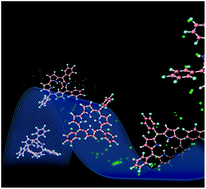Corrole isomers: intrinsic gas-phase shapes via traveling wave ion mobility mass spectrometry and dissociation chemistries via tandem mass spectrometry†
Abstract

* Corresponding authors
a
ThoMSon Mass Spectrometry Laboratory, Institute of Chemistry, University of Campinas – UNICAMP, 13084-970 Campinas, SP, Brazil
E-mail:
eberlin@iqm.unicamb.br
b Institute of Chemistry, University of Campinas – UNICAMP, Campinas, SP, Brazil
c Dalton Mass Spectrometry Laboratory, University of Campinas – UNICAMP, Brazil
d Institute of Chemistry, University of Sao Paulo, Av. Prof. Lineu Prestes 748, CEP 05508-000, São Paulo, SP, Brazil
e Department of Fundamental Chemistry, Federal University of Pernambuco, 50.740-540 Recife, PE, Brazil
f National Institute of Metrology, Standardization and Industrial Quality, Division of Chemical Metrology, 25250-020 Duque de Caxias, RJ, Brazil
g Kyushu University, Fukuoka 819-0395, JP, Japan

 Please wait while we load your content...
Something went wrong. Try again?
Please wait while we load your content...
Something went wrong. Try again?
M. Fasciotti, A. F. Gomes, F. C. Gozzo, B. A. Iglesias, G. F. de Sá, R. J. Daroda, M. Toganoh, H. Furuta, K. Araki and M. N. Eberlin, Org. Biomol. Chem., 2012, 10, 8396 DOI: 10.1039/C2OB26209F
To request permission to reproduce material from this article, please go to the Copyright Clearance Center request page.
If you are an author contributing to an RSC publication, you do not need to request permission provided correct acknowledgement is given.
If you are the author of this article, you do not need to request permission to reproduce figures and diagrams provided correct acknowledgement is given. If you want to reproduce the whole article in a third-party publication (excluding your thesis/dissertation for which permission is not required) please go to the Copyright Clearance Center request page.
Read more about how to correctly acknowledge RSC content.
 Fetching data from CrossRef.
Fetching data from CrossRef.
This may take some time to load.
Loading related content
